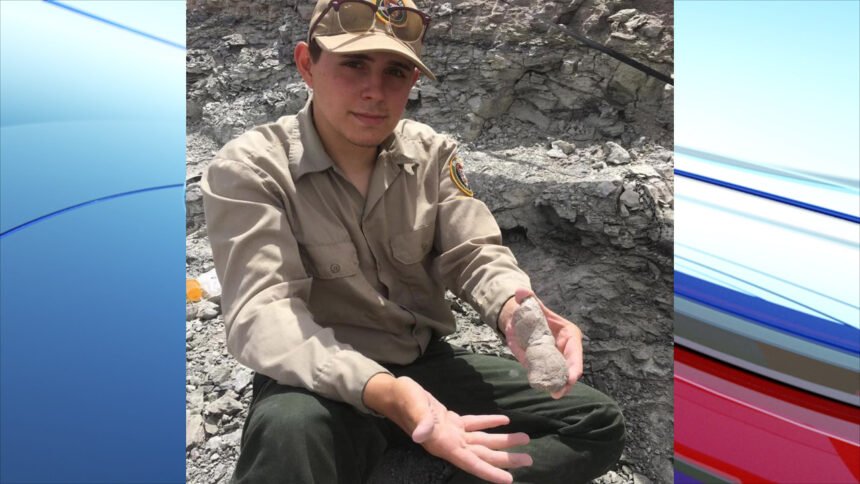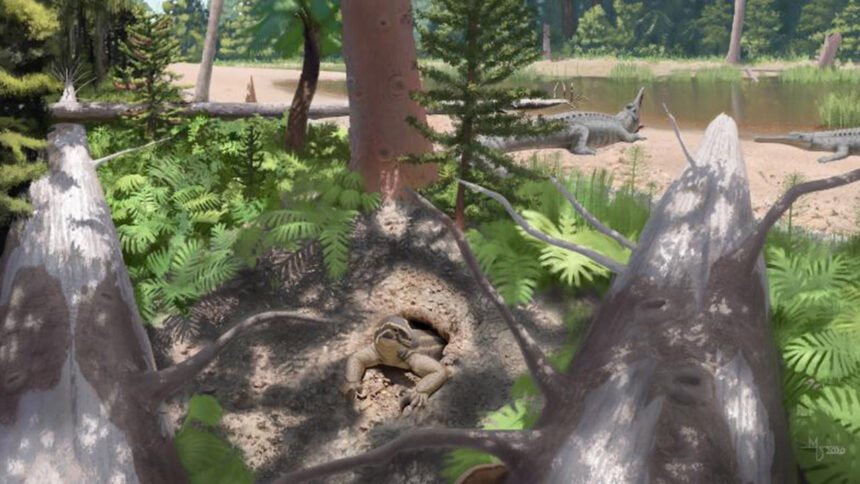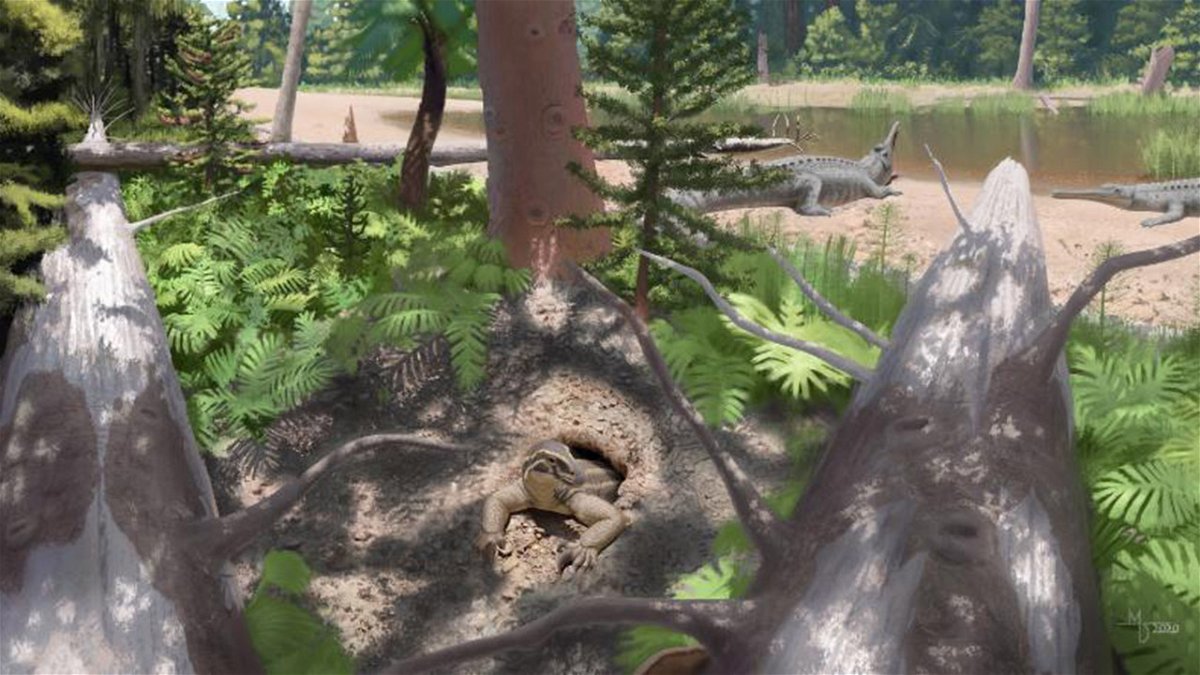ISU doctoral student credited with discovery of 220-million-year-old reptile


POCATELLO, Idaho (KIFI/KIDK) – More than 220-million-years-ago, burrowed deep in the ground of what is now Arizona’s Petrified Forest National Park, lived the Skybalonyx. Though the Skybalonyx predates most dinosaurs, it was only recently discovered by Xavier Jenkins, an Idaho State University biological sciences doctoral student.
Only a little over a foot long, the Skybalonyx looked like a cross between an anteater and a chameleon. It had claws on its second finger that were larger than the rest of its claws, and it also possessed a claw on the end of its tail, making it easier to burrow.

The unique Skybalonyx skapter belongs to the group Drepanosauridae, which lived during the Triassic period, and were known to be tree dwelling reptiles, which is what makes the Skybalonyx so unique.
“Unlike it’s relatives, Skybalonyx was burrowing rather than living in trees,” Jenkins said. “This suggests that these smaller reptiles were more diverse than previously thought. The Skybalonyx is one of the oldest definitive burrowers in North America.”
The Skybalonyx is unique because of its burrowing, but it is also unique because it is a late surviving reptile.
“Drepanosauridae are older than any group of reptiles today,” Jenkins said. “Drepanosauridae made it through the biggest mass extinction ever, probably because they were so ecologically diverse – living in trees, gliding, swimming and now, because of the Skybalonyx, burrowing.”
Skybalonyx was discovered at the Thunderstorm Ridge archaeology site in Arizona’s Petrified Forest National Park. Paleontological fieldwork at Petrified Forest National Park has been ongoing for over a century.
“Based on that, you’d think paleontologists there would have found most of the fossils,” Jenkins said. “However, due to a lot of biases, most fieldwork at the park was directed towards large archosaurs and dinosaurs, which are species that were meters and meters long, and as a result, easier to find and cooler to look at.”
The Thunderstorm Ridge site is distinctive because it samples smaller species, meaning there is a large diversity of new species there.
“Previously, there were about a dozen species from Petrified Forest,” Jenkins said. “Now, because of Thunderstorm Ridge, that number is closer to 40 or 50.”
Skybalonyx skapter is among those new discoveries. After the discovery, Jenkins and his colleagues were able to name the Skybalonyx, which translates to “dung-claw digger” in ancient Greek.
“We chose that name because the Thunderstorm Ridge site has abundant coprolites, or fossilized poop, and because the Skybalonyx had a huge, wide claw suited for burrowing,” he said.
Because of the work that Jenkins did on Skybalonyx, he has narrowed his research interests within paleontology. Jenkins hopes to study how fossil species lived their day to day lives and whether those factors influenced extinction.
“I never expected to name my first species before graduate school, nor did I expect it to be as cool of a species as Skybalonyx,” Jenkins said. “Needless to say, it has set the bar pretty high for these next five years here at ISU.”
The study describing the discovery was published in the October Journal of Vertebrate Paleontology. You can view it HERE.
